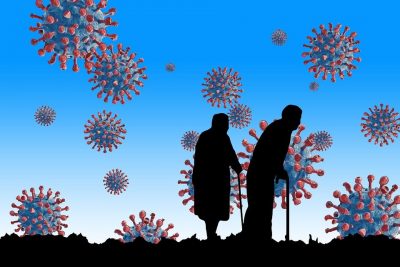COVID-19 Could Kill More People Through Hunger than the Disease Itself, Warns Oxfam
Eight of the biggest food and beverage companies pay out $18 billion to shareholders as new epicentres of hunger emerge across the globe

More people could die as a result of hunger linked to COVID-19 than could die from the disease, warned Oxfam in a new report published today.
The report, The Hunger Virus, reveals how an estimated 122 million more people could be pushed to the brink of starvation this year as a result of the social and economic fallout from the pandemic including through mass unemployment, disruption to food production and supplies, and declining aid. This equates to as many as 12,000 people dying every day while the global mortality rate for COVID-19 reached a peak of 10,000 deaths per day in April 2020.
Eight of the largest food and beverage companies in the world have paid out over $18 billion to their shareholders since the start of 2020 – more than 10 times the funding required for food and agriculture assistance to the most vulnerable communities in the UN COVID-19 humanitarian appeal.
Danny Sriskandarajah, Chief Executive of Oxfam GB, said:
“The knock-on impacts of COVID-19 are far more widespread than the virus itself, pushing millions of the world’s poorest people deeper into hunger and poverty. It is vital governments contain the spread of this deadly disease, but they must also prevent it killing as many – if not more – people from hunger.
“Governments can save lives now by funding the UN COVID-19 appeal and supporting the call for a global ceasefire to end conflict in order to tackle the pandemic. The UK could make a real difference by championing debt cancellation at the G20 finance ministers meeting next week to pay for social protection measures such as cash grants to help people survive.
“For many people COVID-19 comes as a crisis on top of a crisis. To break the cycle of hunger, governments must build fairer and more sustainable food systems that ensure small-scale producers and workers earn a living wage.”
The report reveals the world’s ten worst hunger ‘hotspots’, including Afghanistan, Syria and South Sudan where the food crisis is most severe and getting worse as a result of the pandemic. It also highlights emerging epicentres of hunger – middle income countries such as India, South Africa, and Brazil – where millions of people who were barely managing have been tipped over the edge by the pandemic. For example:
- Yemen: Remittances dropped by 80 percent – or $253 million – in the first four months of 2020 as a result of mass job losses across the Gulf. Borders and supply route closures have led to food shortages and food price spikes in a country that imports 90 percent of its food.
- Afghanistan: Border closures have hit food supplies and the economic downturn in neighbouring Iran has caused a drop in remittances. The number of people on the brink of famine has risen sharply from 2.5 million in September 2019 to 3.5 million in May 2020.
- India: Travel restrictions left farmers without vital migrant labour at the peak of the harvest season, forcing many to leave their crops in the field to rot. Traders have also been unable to reach tribal communities during the peak harvest season for forest products, depriving up to 100 million people of their main source of income.
Women, and women-headed households, are more likely to go hungry despite the crucial role they play as food producers and workers. They make up a large proportion of already vulnerable groups, such as informal workers, that have been hit hard by the economic fallout of the pandemic and have also borne the brunt of a dramatic increase in unpaid care work as a result of school closures and family illness.
Kadidia Diallo, a female milk producer in Burkina Faso, said: “COVID-19 is causing us a lot of harm. Giving my children something to eat in the morning has become difficult. We are totally dependent on the sale of milk, and with the closure of the market we can’t sell the milk anymore. If we don’t sell milk, we don’t eat.”
Since the pandemic began, Oxfam has helped 4.5 million of the world’s most vulnerable people with food aid and clean water, working together with over 344 partners across 62 countries. The international agency aims to reach a total of 14 million people by raising a further $113m.
*
Note to readers: please click the share buttons above or below. Forward this article to your email lists. Crosspost on your blog site, internet forums. etc.

